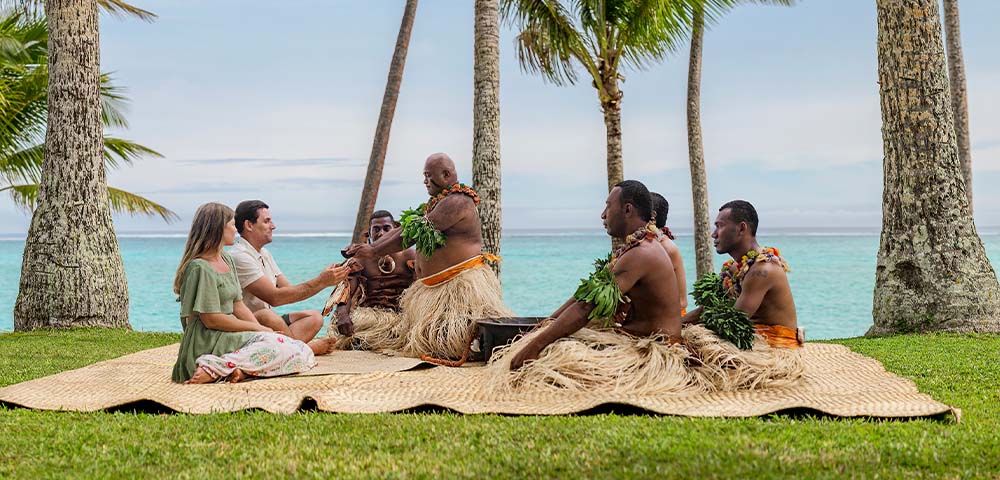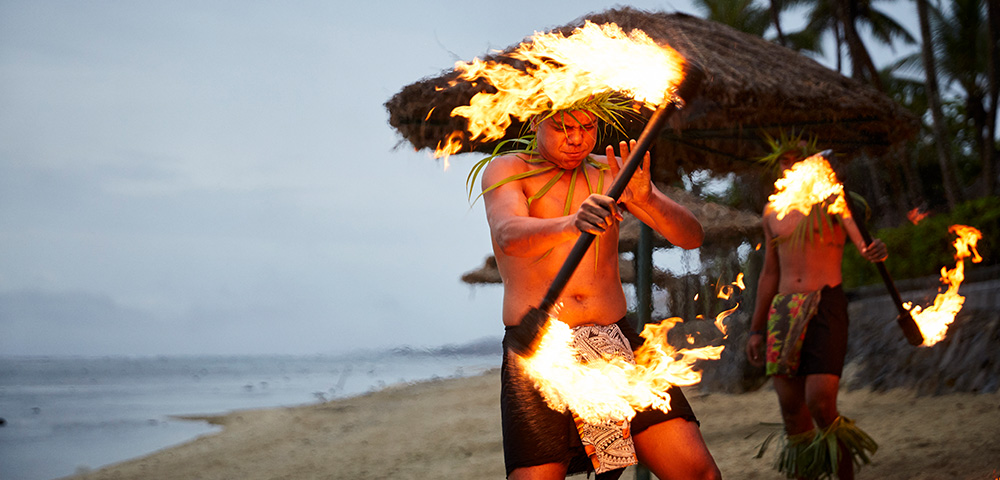



















Immerse Yourself in Fiji’s Vibrant Culture
While Fiji is best known for its beach and ocean activities, there is plenty on offer for those interested in history and culture. After all, Fiji has a storied history spanning Polynesian explorers, tribal settles, colonialism and so much more, all shaping the distinct culture, customs and tradition Fiji is known for today.
From fascinating museums to vibrant Hindu temples, there are so many things to do on the islands that give an insight into the history and culture of Fiji. Here are some of our favourite cultural attractions in Fiji:
Fiji Museum
If you ever find yourself in the capital city of Suva, the Fiji Museum is a cultural attraction well worth visiting. Detailing the history of Fiji, inside you’ll find archaeological material dating back 3,700 years, as well as cultural objects representing Fiji’s indigenous people and the many other communities that have settled in the islands over the past 200 years.
Fiji Museum is divided into several halls, with the most precious items placed deeper within the display areas. A highlight of this museum is the first hall, which displays traditional Fijian double-hulled canoes, known as a ‘Drua’. We also recommend checking out the museum’s display of Indian artefacts, dating back to the 19th century, when the first indentured labourers came to Fiji from India.
While visiting Fiji Museum, be sure to take a walk through the picturesque Thurston Gardens. Here, you’ll find a myriad of beautiful European plant and tree life, as well as sections that display the vibrancy of indigenous tropical flora.
Sri Siva Subramaniya Temple
To discover a different side of Fiji culture, visit the colourful Sri Siva Subramaniya Temple. Located in the heart of Nadi, Sri Siva Subramaniya is the largest Hindu temple in the Southern Hemisphere and one of the few places outside India where you can admire traditional Dravidian architecture.
Fiji has long been home to a large community of Indo-Fijians, whose ancestors first migrated to Fiji in the 1800s to work in the sugar plantations. They soon built the impressive Sri Siva Subramaniya Temple Complex, which features numerous pyramid-shaped temples, each adorned in ornate carvings depicting numerous Hindu gods.
As a place of worship, visitors should ensure to respect Hindu etiquette when visiting. This usually includes covering your shoulders and legs, removing your shoes before entering and not taking any photographs inside the temple itself (you are welcome to take photos of the wider grounds). You are also allowed to enter only if you have not consumed meat on the day of your visit. Visitors may also be asked to wear a sarong while visiting, which are available at the entrance at no charge.
Local Village Visit
For an authentic Fijian cultural experience, we recommend joining a guided local village visit. There is simply no better way to learn about the traditional Fijian way of life and, depending on which village you visit, you will likely be able to wander freely and interact with the villagers as they go about their daily life.
A visit to a local Fijian village also offers an opportunity to take part in traditional ceremonies. Fiji is most famous for its kava drink, which is made from the crushed root of the yaqona plant strained with water. During a traditional kava ceremony, you’ll have the chance to sample freshly made kava, served directly out of a communal tanoa (bowl). Other traditional ceremonies that may occur during your village visit include a lovo ceremony, which is a traditional Fijian feast cooked underground, and a meke ceremony, which tells Fijian legends and myths through song and fire dancing.
Before visiting a traditional Fijian village, take the time to familiarise yourself with local customs and etiquette. Both men and women should cover their shoulders and knees – ideally, you should arrive at the village wearing a sarong. Additionally, wearing a hat and sunglasses may be seen as a sign of disrespect to the chief – if you must wear either of these, we recommend asking beforehand. Finally, all visitors are expected to present a sevusevu (introductory gift) to the village chief. If you are visiting a local village on a guided tour, this gift is usually arranged for you. Immersing yourself in local Fiji culture on a village visit will likely be a highlight of your Fiji holiday.
For more information about the best cultural attractions in Fiji, get in touch with our Holiday Experts!
